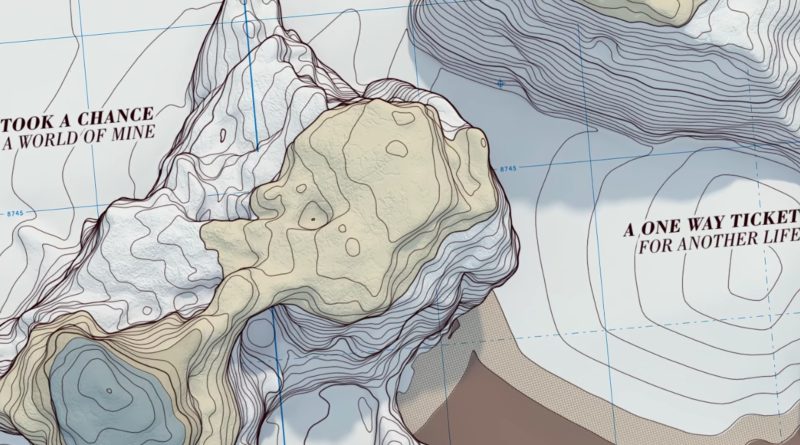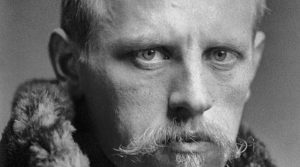The above picture cited from the Woodkid - Land of All video clip.
To discover the world, or more exactly, to understand the world. Basically, that’s what it’s about. At least that’s what I said to myself during my last ski expedition in Lapland. When I said that, I thought of my entrepreneurial career. And so does my wife, Ane, she also an entrepreneur … and she also adepts at exploration. Do the entrepreneur and the explorer has some common traits?
The question is not insignificant. It happens to that I was recently appointed by the Ministry of Higher Education, Research and Innovation, to give my opinion about an entrepreneurial program. And then, it’s been a long time since we’ve been preparing this sport-oriented report. Therefore, it is an opportune moment to go further in our intuitions. What is the relationship betwee¬n exploration and entrepreneurship? What is the relationship between Fridtjof Nansen or Mike Horn, and Xavier Niel or Elon Musk – all of whom are my heroes?
The Risk Management
As a problem solver, the entrepreneur is defined as “the unsatisfied one”, because the notion of “problem” is too ambiguous. However, it is enough to capture an unavoidable aspect of entrepreneurial activity and therefore deserves to be examined first for itself.
My favorite analogy for problem-solving is Rubik’s Cube. “Becoming the great in one field of activity” is comparable in some respects to “getting proficiency in Rubik’s Cube”.
But there is a limit of this analogy, when faced with some problems, specifically when the entrepreneurial activity escaping from the predetermined frameworks. If there are rules of the game known in advance for entrepreneurial activity, they are limited to the need to always remain solvent. And the rest is risk management.
Therefore, the first trait of the entrepreneur is that the entrepreneur, like the explorer, a specialist in risk management in little-known areas – where planning and anticipation are not enough to achieve success. Decisions are always made based on very partial information. By passing the mountain by the East, through the body to the soul of an ICO …
This first common facet of the explorer and the entrepreneur lead us to the second quite naturally: the exploration of new territories and the spirit it implies. Because this spirit contains the small indispensable plus to entrepreneurs.
The Pioneering Spirit
Take the life of Norwegian explorer and scientist Fridtjof Nansen (1861-1930) as an example, whose life probably completely different from the one you and I lead.
Nansen, along with others, crossed the interior of Greenland in 1888. This adventure, he described as “we are always between fear and hope” – which is the feeling that Ane and I, as entrepreneurs are experiencing continually. To eliminate the option of retreat in a safe place, he finally landed by crossing the east coast. “You had to walk relentlessly […] or die in that place.” The current method we always used in entrepreneurship is: once the decision is uncertain, you cannot go back or change direction (at least not too frequently).
To be honest, if I had another life, I would like to live the fascinating life like Fridtjof Nansen. I like to imagine how to plan the crossing of Greenland, how to design all the necessary equipment from scratch, and how to build the perfect team that will make the expedition’s success. After walking and skiing more than 500 kilometers on the glacier, in extreme weather conditions, my team would be the first to cross Greenland.
A few years later, although the polar experts would reject my idea, I would reach the North Pole using the natural drift of the polar ice. I would design and build the FRAM, the ship that would transport us to the northern Arctic Sea and withstand the force of the polar ice without being crushed. At some time, I would leave FRAM with my colleague Johansen, 2 kayaks and 28 dogs to cross the distance to the pole. I would make the wise decision to turn back, although we did not reach the pole, but “only” at the longitude of 86 °, the northernmost point human ever reached. I would suffer to make the decision to kill our dogs one by one, to feed the strongest survivors. After 15 terribly difficult months, I would have the chance to have another explorer to rescue me. I will dedicate the rest of my life to my family, to the publication of all our exceptional scientific discoveries and to humanism.
Nansen’s life is entirely different from mine, but it is so close to what I aspire to. Let’s call this common factor between exploration and entrepreneurship “the pioneering spirit”. Without this little plus factor, an entrepreneur would turn back on the first occasion – and therefore he would not be a real entrepreneur.
This analysis may not enable to convince everyone. Do not we often hear that everything has been explored? However, I do not believe that!
The Resilience
The reason I do not believe that everything has been explored is that this opinion fundamentally ignores the difference between the map and the territory.
Do not be fooled by the fact that there is no more “unknown land” on the maps of the world! There are so many places no one has ever been to – or rarely, like the cataphiles or cave-diving enthusiasts known.
This reality will never fade, as long as the all possibilities will not be fully mapped: this is an unrealizable ideal with no doubt, but it is useful to guide us in the darkness and in the silence of the world.
This misconception, that everything has already been explored, makes me think of the difference between theoretical knowledge and operational knowledge. Risk management requires knowing the world better, and for that, you have to go out into the field, make new maps, create new connections. Bookish knowledge does not deliver everything.
In the field, you have to learn how to achieve and take advantage of the unexpected opportunities, sometimes the unhoped things. This is another essential quality of entrepreneurs: the resilience. It may not always be true that what does not kill you makes you stronger, but for an entrepreneur, it must be true!
This is the condition of survival, once the expedition start.
Conclusion
At the end of this comparison between exploration and entrepreneurship, I would say that the explorer and entrepreneur share the following three traits: The risk management, the pioneering spirit, and the resilience – all of these service for creativity, as a process to discover possibilities for incompletely mapped space.
The entrepreneur reminds us that the quest for understanding the world is also a quest for self-understanding, creating asymmetries and secrets. This is the trait that characterizes among other explorers, magicians, and entrepreneurs.





Je suis d´accord! Hâte de pouvoir en discuter avec vous!